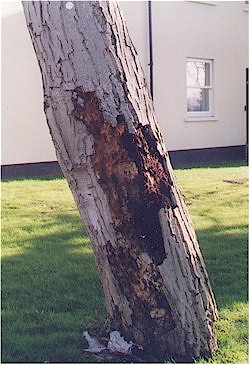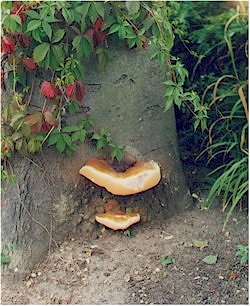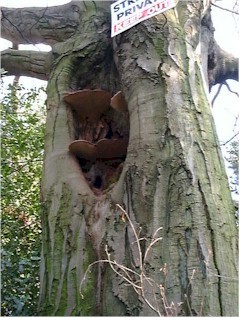Tree Inspection
Trees generally don't just fall over unless they are subjected to particularly extreme weather conditions or are themselves structurally unsafe. Many people have been killed and injured due to tree failure; it is likely that many accidents and fatalities could have been avoided if the tree in question had received an annual inspection.
 Many
court cases have dealt with situations where a tree has caused damage or injury to a third
party, with the third party wishing then to claim damages from the tree owner. The
argument then generally revolves around whether or not the tree owner could have known
whether the tree was in a dangerous condition.
Many
court cases have dealt with situations where a tree has caused damage or injury to a third
party, with the third party wishing then to claim damages from the tree owner. The
argument then generally revolves around whether or not the tree owner could have known
whether the tree was in a dangerous condition.
It seems that a tree owner would be expected to personally check, or commission an expert to check, by visual means, the general condition of their trees on a reasonably regular basis (annual?) and take notice of any signs that indicate a possible defect or danger. Tree owners would not be expected to have an expert knowledge of tree anatomy but would be expected to notice basic visual signs that something is wrong (i.e dead branches, splits, fungal brackets, root plate lift etc). New owners of a property would be prudent to carry out such an inspection without delay.
To reduce the possibilities of such situations it is recommended that tree owners obtain an annual condition survey of their trees by a qualified Arboriculturist.
 If a tree owner is determined to carry out an inspection of their own trees, it
is a good idea to keep a record of such action. Make a rough sketch of your garden and
plot the positions and names of your trees onto the plan; if you have many trees of the
same species close together it may be best to identify each tree on the plan with a number
and fix a tag with this number to the tree itself.
If a tree owner is determined to carry out an inspection of their own trees, it
is a good idea to keep a record of such action. Make a rough sketch of your garden and
plot the positions and names of your trees onto the plan; if you have many trees of the
same species close together it may be best to identify each tree on the plan with a number
and fix a tag with this number to the tree itself.
Then, keep a written record of the inspection process, detailing the trees details (i.e approximate height, diameter, age and any obvious characteristics such as leaning north or Ivy within crown etc). Subsequent inspections would then be noted on your records and should be made ideally twice a year although annually during leaf fall should be adequate. If a disaster should occur and claims were made against you, such a system of inspection would at least show the courts that you have made an attempt to regularly check the visual condition of your trees.
 Tree
Inspection
Tree
InspectionTree inspection should ideally be carried out by an experienced and qualified Arboriculturist. The process should include all aspects of the tree from roots up to branch tips. Characteristics such as root plate movement, fungal bodies, dead branches, tight branch unions, cracks, splits, twists, Ivy, disease, leaf size etc all need to be taken into consideration during the tree assessment.
Additionally, any target hazard needs to be identified and considered. It may be that the tree is located within a woodland area and that certain defects that would be unacceptable on a road side tree are acceptable on a woodland tree.
Fungal brackets and structural defects, such as those featured in the above photographs, indicate an internal decay process. Get an expert opinion immediately.
This text is open to modification. If you have an item to add or change please send details.
© 2000 Chris Skellern. AIE. Home | News | A-Z Index | Resources | Contact AIE | Terms of Use